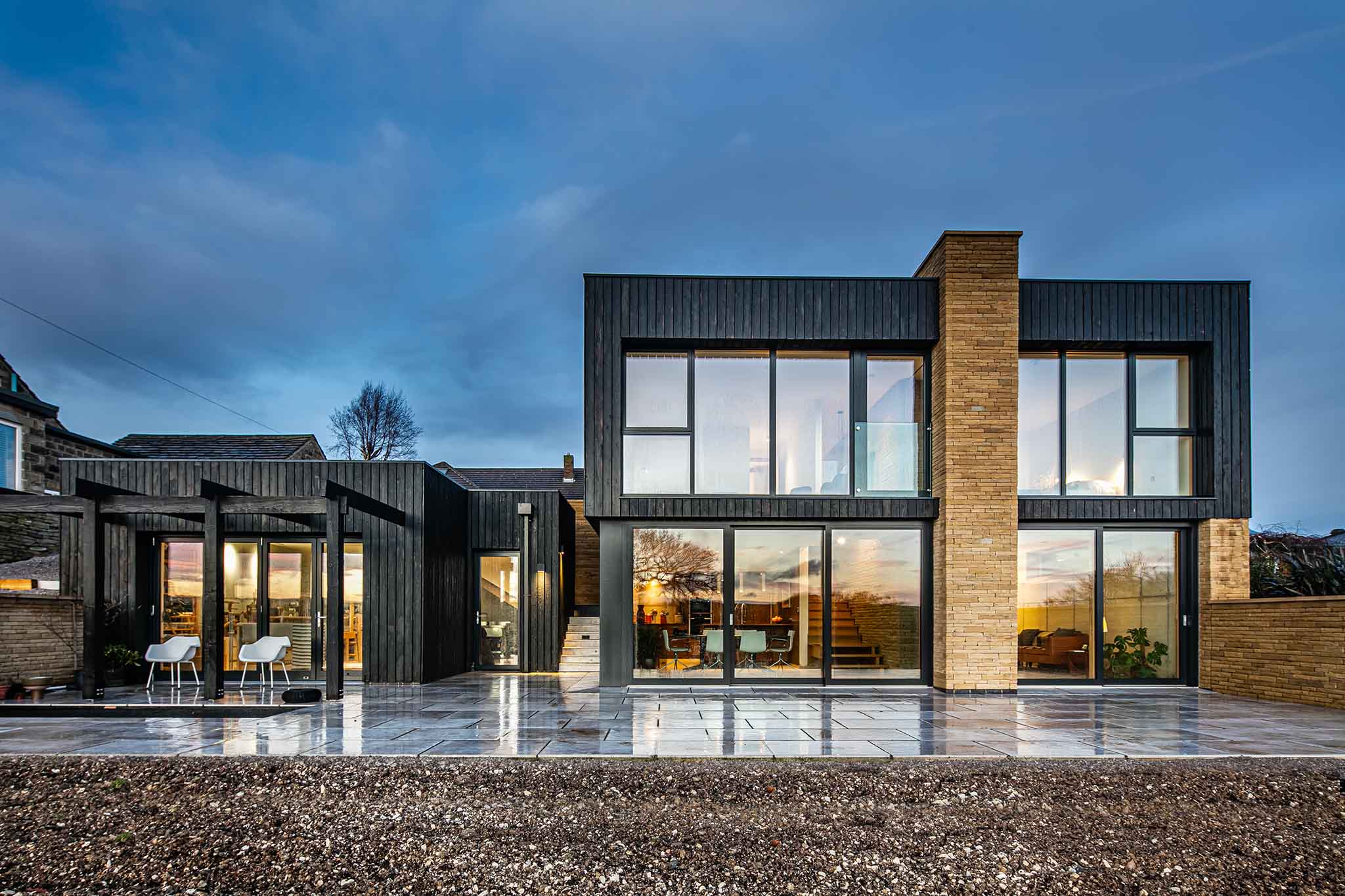
Collection: Passive House Windows
Windows engineered for next-generation comfort.
Norrsken windows are designed for forward-thinking homeowners and architects who understand that the passive house concept goes beyond energy efficiency - it’s fundamentally about achieving exceptional indoor comfort.
Our triple-glazed windows meet the world's leading standard in energy-efficient design, while delivering the comfort, beauty, and enduring quality that define exceptional homes.
"Engineered with precision. Designed to transform how you live."
-
Energy Efficiency
Thermal performance drives everything we do. Certified passive house performance with verified window U-values as low as 0.64 W/m²K.
-
Superior Quality
Precision-engineered timber-aluminium composite windows specifically designed for passive house and ultra-low energy projects, with proven performance in certified developments.
-
People & Expertise
Our team brings specialized passive house knowledge and certification experience, providing technical guidance that goes far beyond standard fenestration.
-
Customer Service
Dedicated support throughout your passive house journey, from initial specification through certification completion, ensuring your project achieves its performance targets.
-
Bespoke Products
Custom solutions for unique passive house challenges, engineered to eliminate thermal bridges while meeting your exact design and performance requirements.
-
Specification to Installation
No distributors, no coordination headaches. Complete support from passive house specification to installation.
Our Passive Windows Range
Configure your perfect passive house windows with precision filters designed for low-energy projects.
Select window opening types, frame materials, glazing configurations, and thermal performance levels that meet your specific requirements. Compare U-values, explore dual-color options, and browse technical data.
-
Outward Opening Alu-Clad Window (P41A)
Regular price £0.01 GBPRegular priceUnit price / per -
Inward Opening Alu-Clad Window (P44A)
Regular price £0.01 GBPRegular priceUnit price / per -
Outward Opening Alu-Clad Window (P32A)
Regular price £0.01 GBPRegular priceUnit price / per -
Inward Opening Timber Window (P33T)
Regular price £0.01 GBPRegular priceUnit price / per -
Outward Opening Timber Window (P31T)
Regular price £0.01 GBPRegular priceUnit price / per -
Inward Opening Alu-Clad Window (P33A)
Regular price £0.01 GBPRegular priceUnit price / per -
Outward Opening Alu-Clad Window (P31A)
Regular price £0.01 GBPRegular priceUnit price / per
Explore our full windows range
Our Window Selector lets you explore every window in our range. Filter by glazing type, frame material, opening options, and Passive House suitability to find exactly what your project needs.
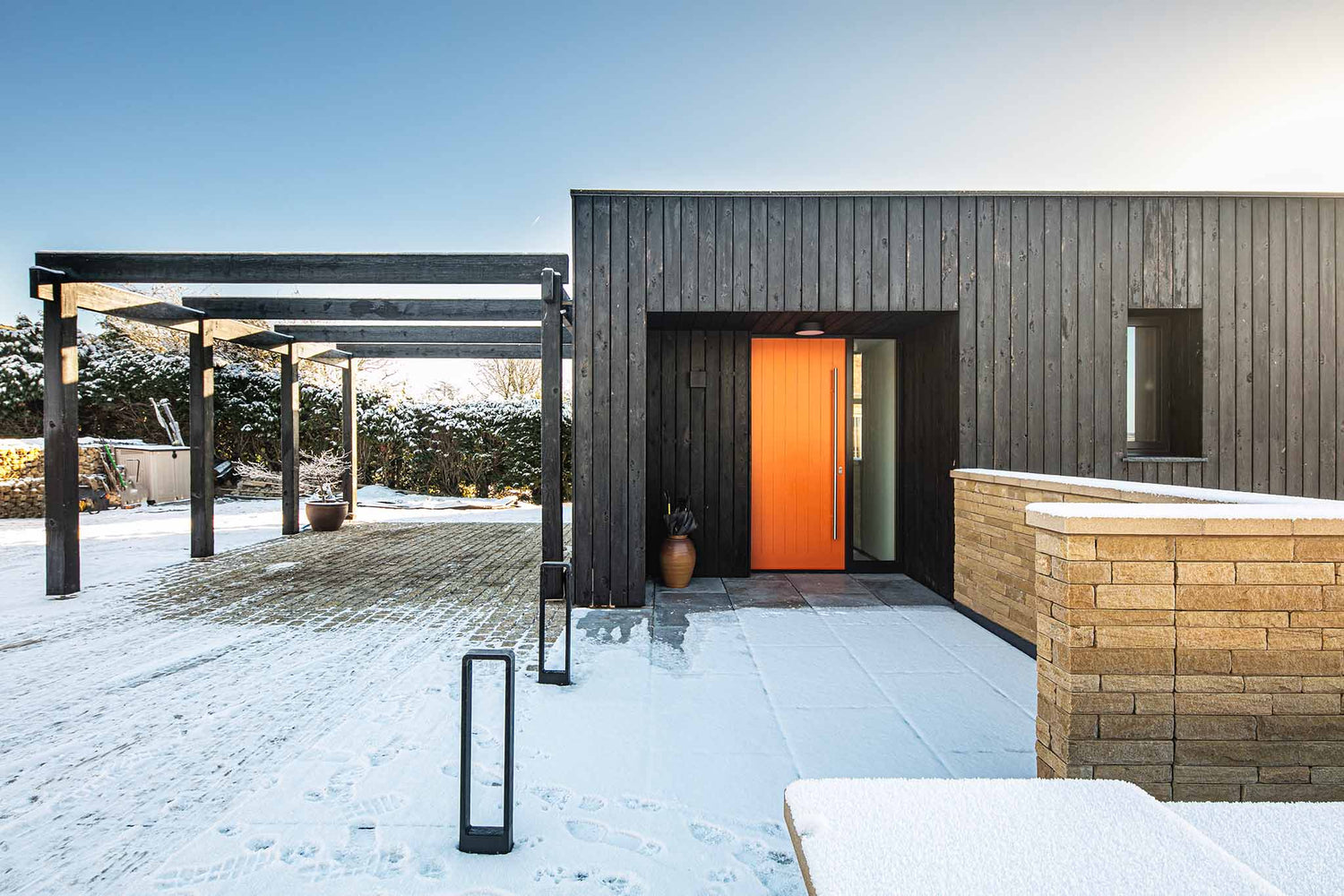
Passive House Doors
Choose from statement entrance doors to expansive sliding systems - all available in dual-color finishes, timber and timber-composite frame models, and custom configurations.
Engineered for the world's leading energy standards, our passive house doors achieve demanding U-values while maintaining the design flexibility and premium build quality that defines Norrsken.
Ready to achieve Passive House excellence?
Take our short survey to discover low-energy windows and doors for your project.
Our Passive House Projects
From mid-century transformations to passive house schools, discover how Norrsken windows and doors create sanctuaries of sustainable comfort.
An architect’s home and studio, nestled in rural Yorkshire. An eye-catching agricultural-inspired family home. Our passive house projects span every architectural vision. Discover your Norrsken neighbours' passive house visions brought to life.
GALLERY
The Passive House Standard
The Passive House Standard is a set of criteria for building. It encompasses all buildings – not just homes – and takes the form of a ‘construction concept’ (Passipedia) rather than a brand name.
To become Passive House certified, new buildings must be constructed, or existing dwellings retrofitted, according to strict requirements in five key areas of the build process:
Collapsible content
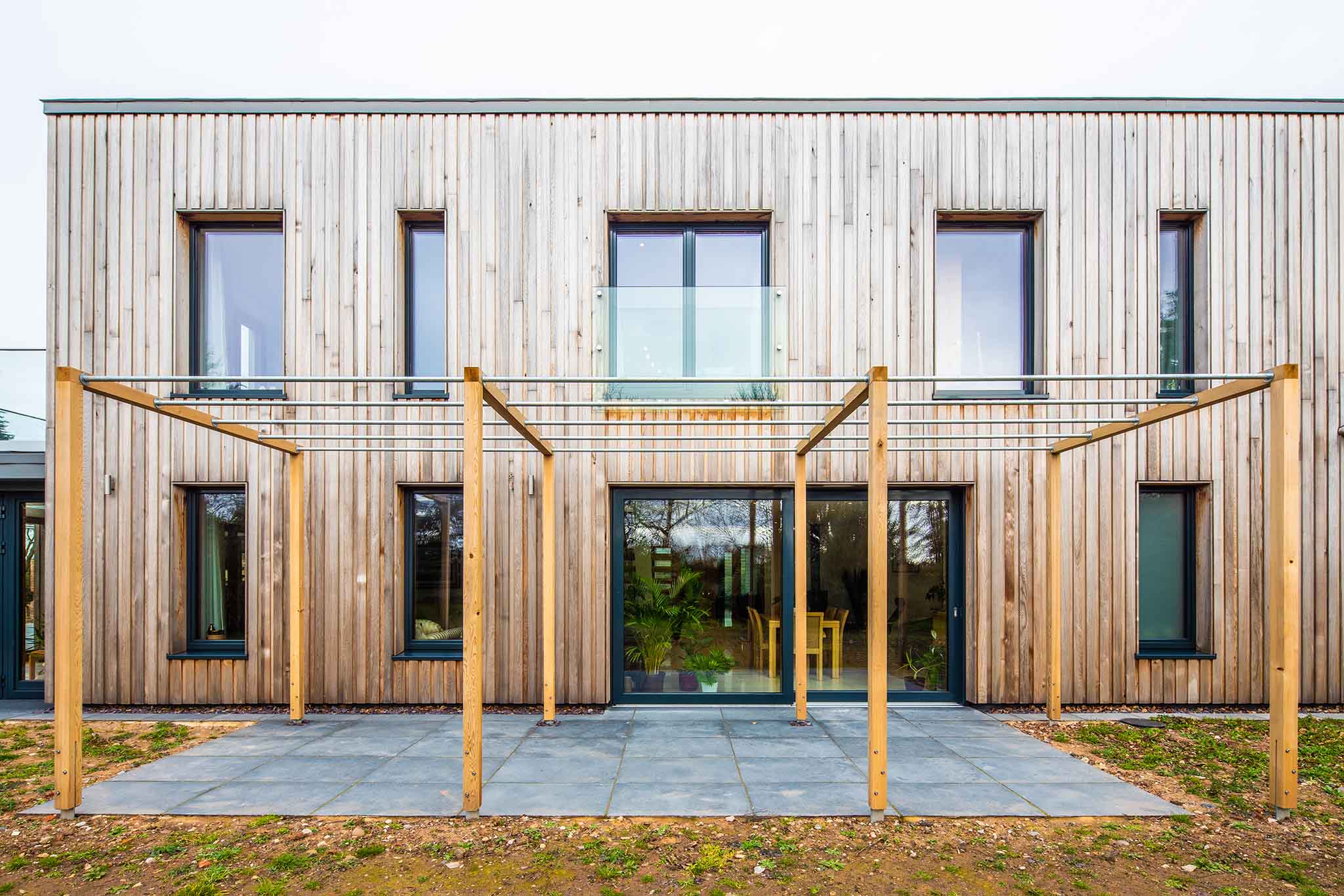
Triple-Glazed Windows
Triple-glazed windows and insulated frames ensure that interior window surfaces are never cold to the touch.
Low-Emissivity (Low-E) glass, with argon or krypton gas between the panes, is used. Learn more about Low-E glass here. The Passive House Institute (PHI) also specifies a U-value of 0.80W/(m²K) or less – a specification easily met by most of our triple-glazed range. You can download full PHPP for our Passive House product range here.
Thermal Insulation
Thermal insulation is usually considered the most important requirement in the design and building process of a Passive House.
All opaque surfaces of a building must have u-values of 0.15 W/(m²K) or less. This keeps warmth in during winter and heat out during summer.
Ventilation
Adequate ventilation - with heat recovery - circulates fresh air through the building and ensures that it remains at or near room temperature.
This prevents the kind of stuffiness you’ll remember from the wintertime years of closed windows in school classrooms and avoids a heat-trap situation in warmer temperatures. A Mechanical Heat Ventilation Recovery (MHVR) system helps to keep both excessive heat and cold very firmly to a minimum.
Airtightness
Passive houses are designed to have a continuous airtight outer shell. Leakage through any gaps must be less than 0.6 of the total house volume, per hour, at 50 Pascals pressure.
This rate is known as Air Changes per Hour (ACH50) and is measured in a process known as a blower door test. It requires airtightness to be around 20x that of a standard build – allowing for clear comfort benefits that include reducing draughts and cold spots.
Crucially, the longevity of a building is also improved. Indoor air always has a higher water vapour content than outdoor air – and so, when draught spots are not eliminated, the condensation caused by air cooled as it leaves the building can cause moisture problems that weaken the building components.
Thermal Bridging
Passive Houses are designed to reduce or eliminate thermal bridging, especially in cooler climates.
Thermal bridging refers to an area or object that is more conductive than the materials around it. Heat follows the path of least resistance, so thermal bridging generally means that we have more heat loss and colder interior surface temperatures. An example of a classic thermal bridge spot: insufficient insulation is detailed below a door or window frame.
The interior surfaces are barely separated from the cold exterior face of the building and all manner of cold and damp spots ensue.
How do Passive House requirements tackle this?
Detailed planning is required to eliminate thermal bridging wherever and minimise their impact where some thermal bridging is unavoidable.
Technical details of the thermal bridging requirements can be found here.
Passive House Benefits
Adhering to Passive House criteria significantly impacts the energy consumption and daily life in a building.
According to the Passipedia website:
“Passive House buildings allow for space heating and cooling related energy savings of up to 90% compared with typical building stock and over 75% compared to average new builds. Passive House buildings use less than 1.5 l of oil or 1.5 m3 of gas to heat one square meter of living space for a year – substantially less than common 'low-energy' buildings. Vast energy savings have been demonstrated in warm climates where typical buildings also require active cooling.”
-
Energy Saving
Space heating and cooling energy savings of up to 90% compared with typical building stock, and over 75% compared to average new builds.
-
Health
Passive houses enjoy a healthier living environment thanks to ventilation systems and a design that eliminates condensation, cold spots, and damp.
-
Durability
Airtightness eliminates draughts. No cold or damp spots means minimal condensation-related damage, and a more durable building over time.
-
Comfort
Energy efficiency is actually only part of a House. What many don’t realise is that the Passive House Standard is also a rigorous comfort standard.
Your Questions Answered
Have a question? You're not alone. We've answered some of the most common questions about Passive House windows below, drawing from years of expertise helping homeowners and professionals achieve their vision.
Can't find what you're looking for? Email the team.
Collapsible content
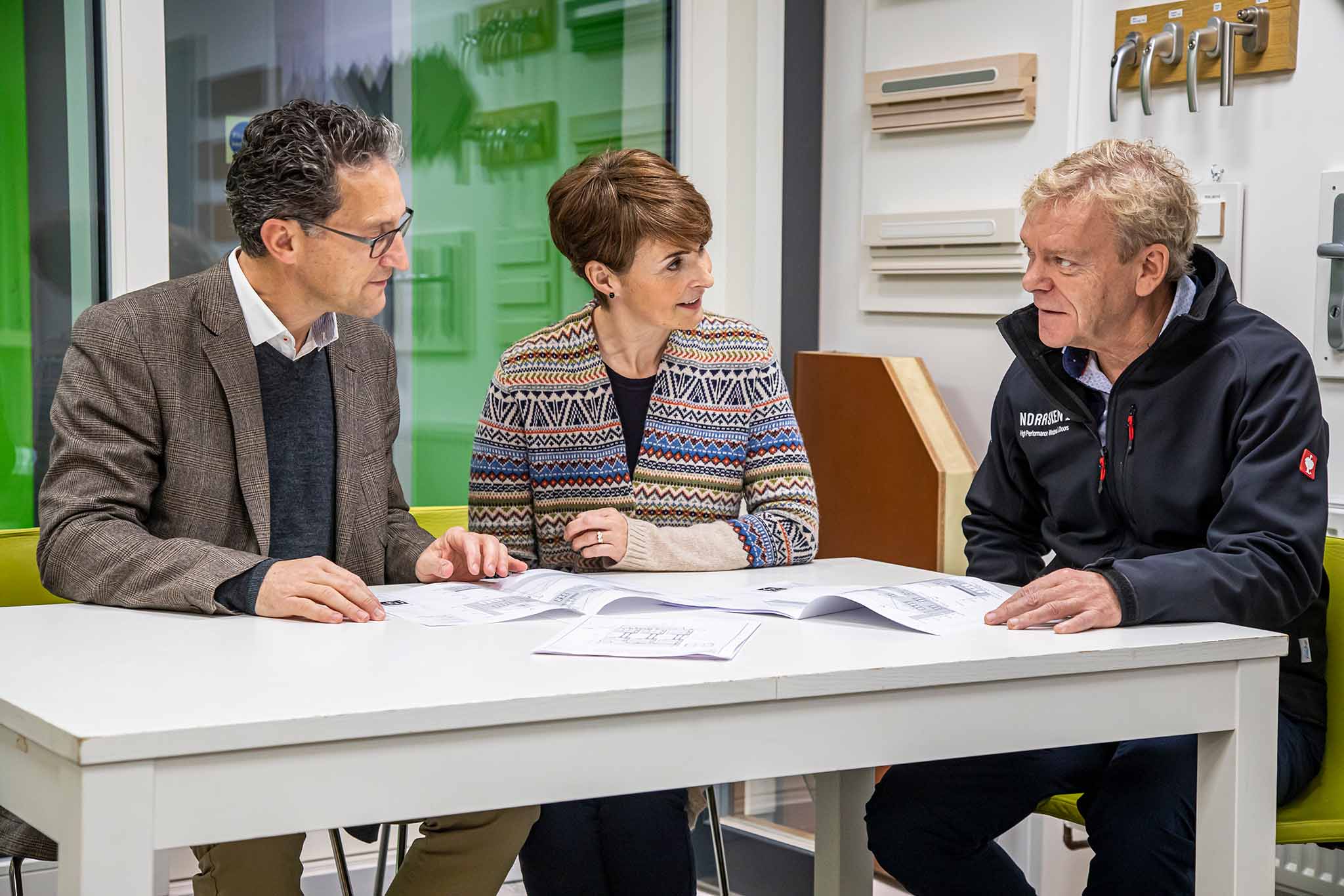
What is a Passive House?
The Passive House (or Passivhaus, in Europe) standard is a building standard and construction concept designed to drastically increase the energy efficiency, comfort and longevity of a newly built property.
German physicist Wolfgang Feist founded the Passivhaus Institute (PHI) and created the Passivhaus performance standard.
How do Passive Houses work?
Passive Houses achieve their high level of performance by meeting exacting criteria in five main areas of the building’s envelope:
- thermal insulation;
- energy-efficient triple-glazed windows;
- effective ventilation;
- airtight construction; and
- elimination of thermal bridging and ‘cold spots’.
Passive houses make use of existing energy sources, such as solar heat entering the building or the body heat of its inhabitants, to heat the building.
Careful planning in the design and construction stages of the building ensures that the home is both very thermally efficient and provides an extremely comfortable living experience.
Do Passive Houses need heating?
Passive buildings’ heating demand is capped at 15kWh/m2 per year - 80-90% less than the average domestic building.
Passive Houses are designed to use passive heating sources such as sunlight and body heat to keep the building warm. Some Passive Houses are even built with no central heating system, although most use some form of active heating.
What are Passive House windows?
Passive house requirements are performance-based.
Windows must have a whole window U-value of 0.80W/(m²K) or less to be suitable. They are usually triple-glazed,with insulated frames or thermal breaks, one or more panes of Low-Emissivity (Low-E) glass, and contain inert gas between the glass panes.
Can you open windows in a Passive House?
You can open the windows in a Passive house to let fresh air in.
This is the simplest and cheapest way of cooling your home in summer. Passipedia recommends having "at least one window in each room openable and having a tool to keep it fixed at a specific level".
How much glazing can you have in a Passive House?
Solar gain, particularly through glazing on the south façade, is used as a heat source in passive houses, but too much glass causes overheating in high temperature periods.
This is inefficient if cooling must be used and uncomfortable for occupants. The PHPP is used to balance these factors at the design stage.
Do Passive Houses overheat in summer?
No. Passive houses are designed to be comfortable in both low and high temperature periods.
High levels of insulation actually help to keep the indoor temperature low in well-ventilated buildings during the summer. Read more about Passive Houses in summer here.
What's the difference between Passive Houses and net zero homes?
Net zero homes must produce as much energy as they use in a year, generally incorporating renewable energy resources to do so, while Passive Houses’ heating demand must not exceed 15kWh/m2 annually.
This is achieved by meeting more stringent criteria in the building design and construction than Net Zero requirements, so Passive Houses may require less solar energy to reach Net Zero.
What are the benefits of Passive Houses?
The benefits of Passive Houses include energy savings, lower heating costs, and a more durable, low-maintenance building.
They also offer a healthier, more comfortable living environment, along with financial advantages like reduced energy tariffs and increased eligibility for green mortgages.
Are Passive Houses environmentally friendly?
Yes. Passive House buildings are eco-friendly by definition:
"They use extremely little primary energy... The additional energy required for their construction [embodied energy] is insignificant compared with the energy they save later on." (Passipedia)
Are Passive Houses healthy?
Passive houses use MVHR systems to supply fresh air consistently throughout the building.
This ensures a higher quality, more hygienic and relatively condensation-free air supply. The risk of mould, damp and cold spots is reduced - healthier for the inhabitants, and more comfortable than in a typical home.
Are Passive Houses expensive?
It’s generally, but not always, true that Passive House construction costs more in components than a standard build.
“Compared with standard construction, building to the Passivhaus standard incurred an extra cost of approximately 8%” (The Passivhaus Trust).
AECOM found that the capital costs of new builds reimagined as Passive Houses were estimated to increase by less than 1%.
What are the most expensive components in Passive Houses?
MVHR, wall & roof components are the largest extra-over costs on average.
However, these may be offset as heating systems in Passive Houses tend to cost less than typical builds. Passive buildings’ heating demand is capped at 15kWh/m2 per year - 80-90% less than the average domestic building - which may offset component costs.
Can you build a Passive House at no extra cost?
Important early design decisions including building form, orientation & window design can drive efficiency.
Offsetting these design savings against the extra costs for the higher quality fabric, it is possible to deliver higher quality Passive House buildings at no extra cost by recouping the extra you spend on systems. Whether this is achievable in practice will vary from project to project.
Do Passive Houses save money?
Passivhaus delivers a 30% saving on energy bills compared to a typical new build using either a gas boiler or an Air Source Heat Pump (source: Passivhaus Trust).
Passive buildings’ heating demand is capped at 15kWh/m2 per year - 80-90% less than the average domestic building - which may offset component costs.
Where can I find UK Passive House suppliers?
The Passivhaus Trust is a UK affiliate of the International Passive House Association (iPHA).
The PHT promotes the adoption of Passivhaus in the UK. You can find a comprehensive list of Passivhaus Trust members and components suppliers for UK Passive House projects here.
Helpful Resources
-

Norrsken joins NBS to streamline specification ...
Norrsken Joins NBS Platform, making specification simpler for architects and design professionals.
Norrsken joins NBS to streamline specification ...
Norrsken Joins NBS Platform, making specification simpler for architects and design professionals.
-

Window wisdom for 2025
From bold frames to passive house performance, see what's shaping window design in 2025.
Window wisdom for 2025
From bold frames to passive house performance, see what's shaping window design in 2025.
-
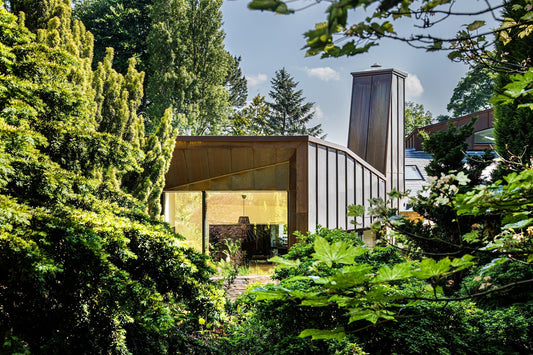
The EnerPHit Standard
Learn how the EnerPHit Standard makes passive house retrofits achievable, efficient, and future-proof.
The EnerPHit Standard
Learn how the EnerPHit Standard makes passive house retrofits achievable, efficient, and future-proof.
-
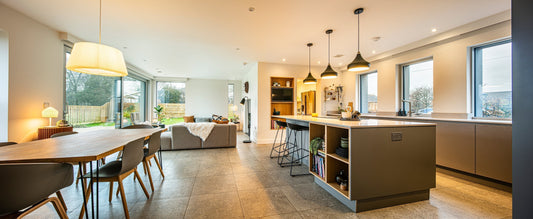
Understanding Part L Building Regulations
Find out how Part L affects your project's fabric and glazing choices, and how it supports energy goals.
Understanding Part L Building Regulations
Find out how Part L affects your project's fabric and glazing choices, and how it supports energy goals.
Debug: is_article_page = false
Debug: current_article_id = 0
Debug: search_tags = passive-house
Debug: search_query = passive-house
Debug: Total articles found = 12
Debug: Post limit = 4
Debug: Posts exceed limit = true
Debug: Article 1: Norrsken joins NBS to streamline specification for architects from
Debug: Article 2: Window wisdom for 2025 from
Debug: Article 3: The EnerPHit Standard from
Debug: Article 4: Understanding Part L Building Regulations from
Debug: Article 5: The Benefits of Passive Houses from

















